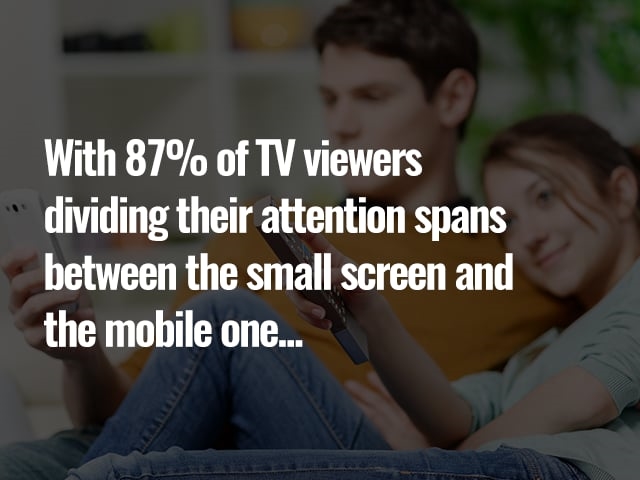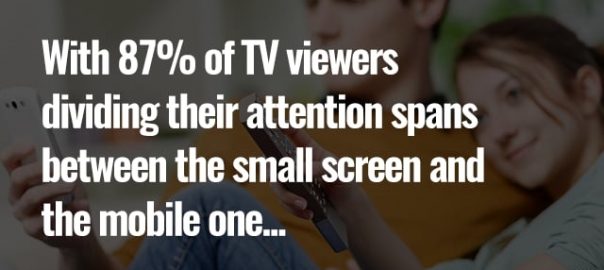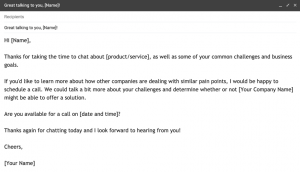In part 5 of this series examining the many use cases for interactive native content, contributor Jane Loring explores how this new approach can be implemented within your cross-channel marketing strategy.

It’s easy to mistake cross-channel marketing for another buzz-term or gimmick. However, in reality, few tactics so perfectly fit today’s audience and its hectic content consumption habits.


The following tips work well with any marketing endeavor you set out on, be it market education, brand awareness, growth or rebranding.
No matter the goal — you simply cannot afford to approach your multi-channel audience with a single-channel message.
A cross-channel campaign means a lot more than just creating content items for each channel. In fact, it calls for a different mindset, based on the realization that readers are no longer fully available to consume a brand’s message in its entirety. That is why cross-channel activity often means creating short, impactful bursts of messaging that audiences are able to consume quickly as they shift between channels.
For your message to shine through the massive amount of information that readers are constantly bombarded with, you must create an immersive experience that will transcend readers to a different, interactive world. Doing so as part of your campaign will strengthen your message by continuing the conversation in a profound way.
A great example can be found in an interactive branded content campaign we recently created for the latest season of Netflix’s original series “Orange Is the New Black.” The campaign invited readers to answer a series of questions, and learn whether or not they would have survived a prison riot, making the viewing experience much more personal and holistic.

An even better way of incorporating interactive content into your cross-channel strategy is by adding a dose of data to the mix. An engaging poll, for instance, can be followed by a piece of video content that addresses the reader’s vote.
The channel is the message
If you have been following my series on interactive native content, you already know by now that one of native content’s unique differentiators is its ability to fit the reader’s experience, and catch their attention where and when they normally consume information. As the user’s journey changes and shifts between channels in a matter of seconds, the only way to lead users to a purchase is by making that shift along with them.
As the user’s journey changes and shifts between channels in a matter of seconds, the only way to lead users to a purchase is by making that shift along with them.
Unfortunately, some marketers still make the mistake of creating a cross-channel campaign that presents the same message on different screens, rather than exploring the plethora of opportunities each channel presents.
Interactive content adds a nice twist to the plot, and enables marketers to use different storytelling tools to fit the variety of channels that are included in the campaign. This way, not only will your audience be intrigued and engaged thanks to the entertaining experience you create, but you will also be able to make the most of each channel’s strength points by pairing it with a specific content experience.
Embeddable content allows you to easily include your interactive message on any of the existing content channels your audience visits regularly, thus combining the right outlet, storytelling tools and messaging to reach a winning formula.
For example, using tactile storytelling tools that ask users to unblur, swipe or zoom-in is perfect for mobile phone users. One example can be found in our campaign for Warner Brothers’ recent King Arthur film, which asked readers to unblur GIFs and reveal the leading actor.
Some visuals, however, will work better when displayed on the larger tablet screen. And the best part? Today’s targeting capabilities can help you match the right content with specific audiences based on their device of choice at any given moment.

Let’s get physical
Another option is to combine interactive native content with actual physical events (remember those?). Allowing your audience to interact with relevant content before, during or after an event helps raise awareness for it and ensures the messages you wanted the event to deliver really sinks in. Invite potential attendees to sign up for a chance to win free tickets, create a follow-up recap item right after the event, and even include interactive storytelling tools as part of a panel.
As you can see, there are countless ways for utilizing interactive storytelling when forming a cross-channel marketing campaign. No matter which of the above approaches you choose to embrace (and what new ways you creatively come up with yourself!), as long as you allow your audience to be heard, and cater to their specific content consumption habits, your campaign will reach better results across channels.
Some opinions expressed in this article may be those of a guest author and not necessarily Marketing Land. Staff authors are listed here.
Marketing Land – Internet Marketing News, Strategies & Tips
(82)









